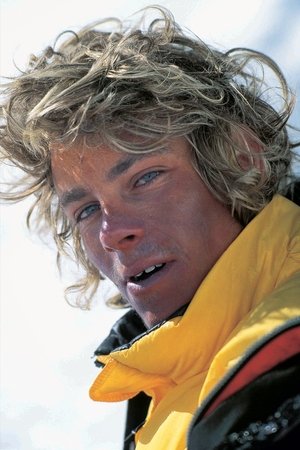Marco Siffredi (1979-2002)
Birthplace:
Chamonix-Mont-Blanc, Haute-Savoie, France
Born:
May 22, 1979
Died:
September 8, 2002
Marco Siffredi, born May 22, 1979 in Chamonix-Mont-Blanc and died on Everest September 8, 2002, is a French snowboarder and mountaineer. Marco Siffredi was born on May 22, 1979 in Chamonix-Mont-Blanc. He is the youngest of a family of mountaineers. Her father Philippe is a hairdresser in Chamonix and a high mountain guide. He grew up in the shadow of his brother Pierre, who died in an avalanche in 1981. In 1999, Marco was only 20 years old, but he quickly made an impression. Following in the footsteps of his idol, Jean-Marc Boivin, he made the first snowboard descent and the second descent in the history of the coveted Nant Blanc on the Aiguille Verte. This 1,000 meter line of average 55 degree drop with 60 degree sections had never been repeated since Boivin's epic ski descent in 1989. A few months later, in the fall of the same year, he adds to his record the first descent of Dorje Lhakpa (6,988 meters) in Nepal. From this peak, he has a breathtaking view of two of the highest peaks in the world, Shishapangma and… Everest. He then becomes obsessed with an idea: to be the first to descend the top of the world on a snowboard. As soon as he returned to Chamonix, Marco contacted the best of the profession, Russell Brice of Himalayan Expeditions, a New Zealand guide specializing in expeditions to 8,000 meter peaks. It is he who will advise the young rider to try other 8,000 meters before attempting Everest to see if his body can adapt to the extreme altitude. It will be Cho Oyu (8,201 meters), the sixth highest peak on the planet, in the fall of 2020, climbed after Huayna Potosi, a Bolivian summit of 6,088 meters reached in June 2000. That's it, the Chamoniard is feels ready to tackle Everest. He entered the history of the Himalayas in May 2001, by successfully completing the first full descent of the Tibetan side of Everest (8,849 m), via the Norton corridor, on the north face, 1,800 meters of drop and four hours of descent. He is the first and the only one, still today, to have achieved this feat. The news, communicated by satellite telephone, had the effect of a bomb. Marco's historic descent will be recorded as the first continuous snowboard descent of the highest mountain in the world. As soon as the descent is over, he has only one idea in mind: to repeat this feat but, this time, through the Hornbein corridor. This is the most difficult path. A narrow slope, with passages where the inclination reaches 45°. The following year, on September 8, 2002, the young Chamoniard returned to the summit of Everest. His ascension partners, Pa Nuru, Da Tenzing, and Phurba Tashi, trick Siffredi into abandoning his goal. Phurba Tashi, in particular, did not fail to note that this time Marco does not seem as relaxed and in good shape as during his first expedition to Everest. He dives into the Hornbein corridor to make the first descent of this pure, steep, vertical and committed axis, shearing the highest peak on the planet over almost 3,000 meters of drop. The Sherpas watch him make a few turns from the summit at 8848 meters then it disappears. Forever... As captured by the legend of Everest.





